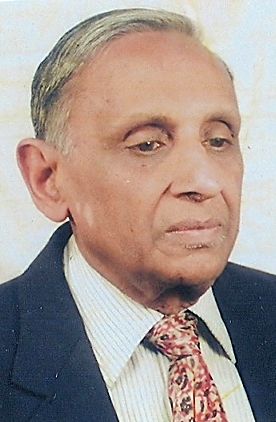Latest Contributions
Read More Contributions
History of Hope Circus, Alwar
Category:

R C Mody is a postgraduate in Economics and a Certificated Associate of the Indian Institute of Bankers. He studied at Raj Rishi College (Alwar), Agra College (Agra), and Forman Christian College (Lahore). For over 35 years, he worked for the Reserve Bank of India, where he headed several all-India departments, and was also the Principal of the RBI Staff College. Now (2017) 91 years old, he is engaged in social work, reading, writing, and travelling. He lives in New Delhi with his wife. His email address is rameshcmody@gmail.com.
It was at some stage during his 30 years’ reign (1903-33) that Maharaja Jey Singh, a great builder, found that his capital city Alwar had great potential of extension, modernisation and beautification. The city was encircled by am old wall which was surrounded by a moat. The moat was expected to remain filled with water, thus giving the city protection against an invader. But the moat was for long without water and with the advent of 20th century, there remained no possibility of any military invasion. Thus, both the wall and moat became anachronistic, and, in fact, an obstruction in growth of the city.
Jey Singh, with the aid of town planners, drew up a scheme for demolishing the wall and filling up the moat with the rubble released by demolition. The space created by the moat thus filled up along with the adjoining land would provide plenty of additional space for extension and modernising of the city. However, Jey Singh was always short of money, and didn't have resources to accomplish this plan. It remained only on paper for several years.
It was taken up by Alwar's British rulers, after Jey Singh was sent into exile in 1933. But they too had resource constraints, and implementation of the plan was slow. At last, by the beginning of 1940, the task was completed. At this time, the Chief Minister was Major C W L Harvey. Tej Singh was the Maharaja but without any administrative powers
A new circular market had come up on the reclaimed land with shops on the ground floor and residences, lawyers' chamber/ medical clinics et al on the first floor The old city had a new look. My uncle who visited Alwar in 1943 after some eight years felt like Alice in a Wonderland.
The entire new space, however, could not be fully utilized, as during demolition, a Shiva temple was found, which had to be preserved. Due to this, a large broad-based round tower, resembling a mini fortress, had to be built in the middle of the reclaimed space, on the top of which the temple was located. But for this temple, there could have been a lovely park in the middle, (a smaller version of what we see in Connaught Place, New Delhi), which would have been an ideal spot for recreation and gossiping.
Once everything was complete, what remained to be done was the inauguration of the new market and giving it a name. Alwar was one of the few states entitled to Viceregal visits. All Viceroys since 1880s had paid a visit to Alwar, with the exception of Lord Willingdon (1931-36) who had sent Jey Singh into exile. In 1940, Lord Linlithgow, who had selected Tej Singh to become the Maharaja of Alwar in 1937 after Jey Singh had died heirless, was the Viceroy.
A request was made to Linlithgow to pay an overdue Viceregal visit to Alwar and to inaugurate the new market during the visit. And he consented.
It was thus on March 3, 1940 that the inauguration of the new market took place. I was preparing for my High School examination starting on March 18. With my text books along, I went up to the new market, about a kilometer away from my residence to occupy a vantage point on the first floor of one of the newly built building, to watch the inauguration. At the appointed hour, around 10 am, a limousine with open hood entered the circle with the all powerful Viceroy of India, known for his long chin (often portrayed in Shanker's cartoons) seated in it. Maharaja Tej Singh, the host, was seated to his left. Opposite them sat Major Harvey, the Chief Minister.
After taking a round of the circle, the party alighted for a few minutes at the designated point, and the Viceroy declared the market open. After that, the cavalcade drove out and was soon out of sight. The whole thing lasted about 10 minutes.
By afternoon, we learnt that the market had been named Linlithgow Circus. People were not happy. Name was too long, and not easy to pronounce by people not knowing English.
Then within a few days something happened, about which I am not fully aware. It was known that the Viceroy's personal name was Victor Alexander John Hope. Linlithgow was the name of his ancestral castle in Scotland. (It is also the name of a rail station adjoining the castle, which I passed during a rail journey in 1990.)
Some wise person suggested the alternative name Hope Circus. It was finally accepted, after getting approval from the Viceroy's office. Thus, it became Hope Circus, and the name is continuing for over 77 years. People after some time forgot the person after whom it was named.
Some tried to translate it into Hindi, and call it Asha Chakra. But that did not stick. Moreover, Alwarians loved to believe that their city had a counterpart of Connaught Circus in New Delhi,
Epilogue
My feeling was that it should have been named after Jey Singh, and called Jey Circus or Jey Singh Circus. But that was not a possibility. In 1940, none of those who mattered, Britishers or the reigning Maharaja, had much love for Jey Singh.
© R C Mody 2017
Add new comment